5% Nutrition has kept us busy lately, with the uniquely-formulated 5% Core Series that goes beyond single-ingredient formulas, the new Shred Time and Stage Ready diet stack, and even the limited-edition return of their Starry Burst All Day You May flavor.
But when it comes to 5% Nutrition -- and Rich Piana especially -- we often think about regimens that are a bit outside of the regular supplement wheelhouse. No, not synthol, but some of that exogenous hormonal support.
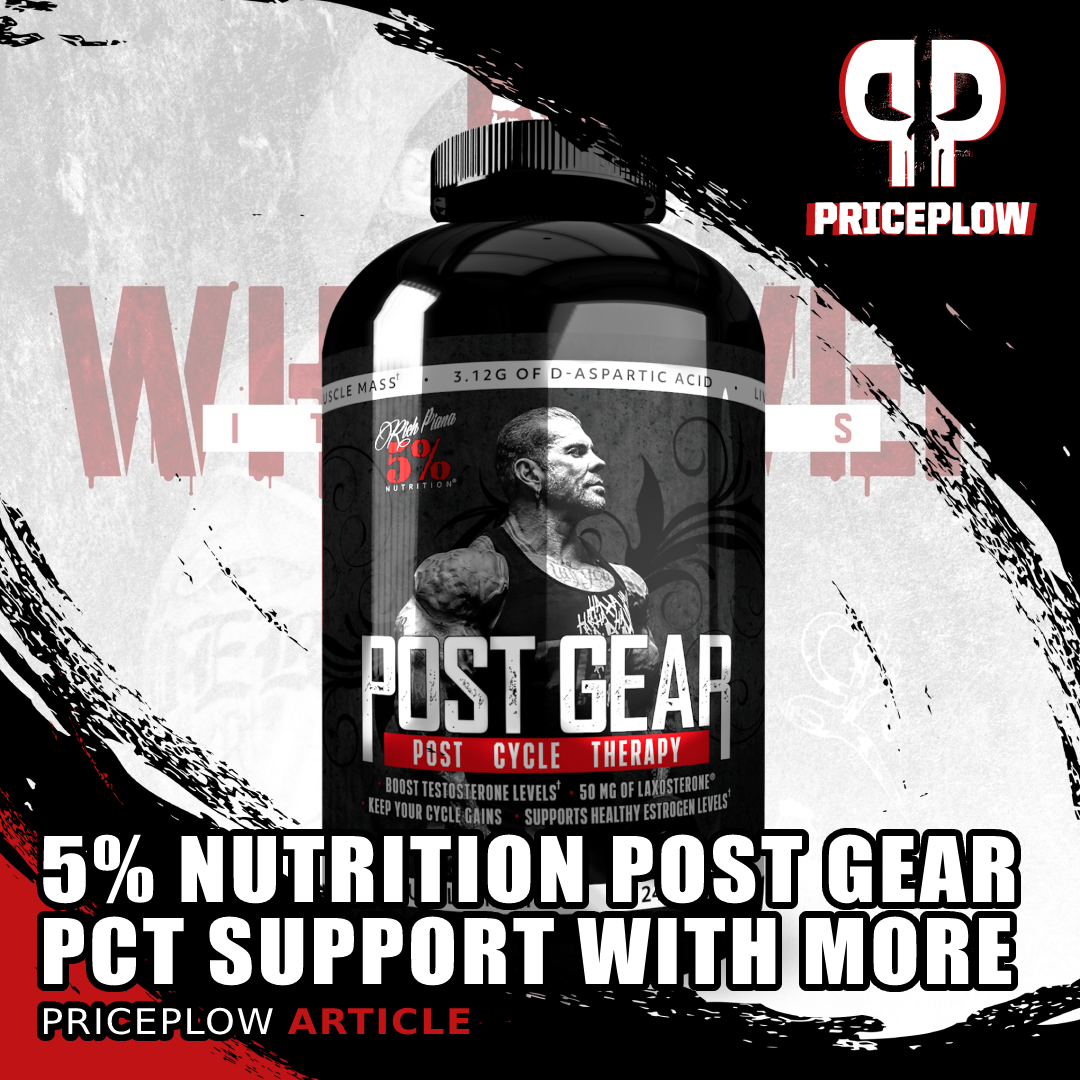
5% Nutrition Post Gear is a PCT Support Supplement that has a few new things and should bring you a few very fun weeks - even after the cycle's over!
Pharmaceuticals are outside of the scope of this site, and pharmaceutical enhancements on-cycle often require pharmaceutical protection post-cycle. However, there are supplements that can help us keep our hormones in range (as much as possible) while still protecting the liver after the cycle is over.
Post Gear: 5% Nutrition's Post Cycle Support Supplement
To help with post cycle support, 5% Nutrition has launched Post Gear, which is aptly named because... you take it post gear! We want to again emphasize that this isn't the only thing you'll take post gear, but it includes several natural dietary supplement ingredients that can help your body get back to natural testosterone production while protecting the liver as an adjunct post cycle therapy.
Wait, doesn't 5% Nutrition have "Liver & Organ Defender"?
This question was first to come up for us, so it's worth answering immediately. YES, but:
- Liver & Organ Defender is to be used as on cycle support
- Post Gear is to be used as post cycle support
Both are great, but Post Cycle has a bit more in terms of testosterone maximization (leaning heavily on D-Aspartic Acid) and estrogen control (with some new ingredients covered), while Liver & Organ Defender is all about organ protection.
With all of that disclaimed, let's get into Post Gear:
Rich Piana 5% Nutrition Post Gear – Deals and Price Drop Alerts
Get Price Alerts
No spam, no scams.
Disclosure: PricePlow relies on pricing from stores with which we have a business relationship. We work hard to keep pricing current, but you may find a better offer.
Posts are sponsored in part by the retailers and/or brands listed on this page.
5% Nutrition Post Gear Ingredients
In eight capsules, you get the following ingredient doses:
-
Testosterone Boosting Complex
The goal here is simple (yet tough to execute): keep testosterone levels as high as possible and encourage natural testosterone production while coming back down to earth.
-
D-Aspartic Acid - 3,210 mg
In eight capsules per day, 5% Nutrition helps you keep what you gained as much as possible. But don't let this stop you from getting prescriptions as well!
If you're looking for relatively short-term natural testosterone gains (which is exactly what we're banking on here), D-Aspartic Acid (DAA) is one of our favorite test boosting ingredients, and after some time of being over-hyped, we now believe it's back to being underrated, so long as we're honest about it.
D-Aspartic acid is a precursor molecule for many of our sexual hormones, and the theory is that more DAA availability in the body will help increase testosterone, luteinizing hormone, follicle-stimulating hormone, and growth hormone in the body. Turns out, the theory is true - at least for a few weeks!
A 2009 study showed that the participants had a 42% increase in testosterone - at least for two weeks![1] However, by the end of the month, the numbers did settle back to baseline, and that's where the industry needs to be honest with itself. This, however, is not an awful thing -- with Post Gear, we're trying to buy time and give your body all of the precursors it needs to kickstart its own test production again. DAA could be one such precursor.
If your concerns are fertility, this is one of the best supplement ingredients out there, with DAA's fertility benefits lasting far longer than the hormonal changes. A 90 day study at 2.66 grams per day significantly improved nearly every sperm-based parameter.[2]
So long as the industry is honest about DAA, we're all for it - short term test gains when we need them, long-term fertility gains for when we need those.
-
Longjack Extract (Eurycoma longifolia) (root) - 300 mg
Longjack is also known as Eurycoma longifolia and Tongkat Ali, and we often see it in natural testosterone boosters - although not usually at such a great dose as 5% Nutrition used here. For quite a long time, the herb has been used for virility and sex drive, two effects few will argue with.
Some studies have found solid effects on testosterone as well: a 2014 study at an albeit-high 400 milligram daily dose of longjack induced free and total testosterone, and also increased muscular contraction force in both genders.[3]One study measured cortisol also measured salivary testosterone. It went up significantly in longjack users (32 men, 31 women).
Earlier research published in 2012 showed the 300 milligram daily dose that we have here to increase libido by as much as 10.8% after long-term use (12 weeks).[4]
What's great for drug-tested athletes is that it does not increase urinary testosterone,[5] and as of writing in 2021, is not a banned substance - but it does seem to be a performance enhancer. A systematic review published in 2016 found enough evidence supporting lognjack as an ergogenic performance enhancer for athletes.[6]
Interestingly, the mechanism isn't fully understood,[5] and has become something of a hot topic amongst androgen researchers.[7-10]
What we do know is that a solid 300 milligram dose of it could give an extra uptick in testosterone, and keep strength a bit higher, which is also a concern after coming off cycle -- can't lose those gains! The next ingredient may help with that as well.
-
5a-Hydroxy Laxogenin (from Smilax officinalis extract (root)) (Laxosterone) - 50 mg
Laxogenin is found in the plant Smilax Sieboldii, a relative of asparagus. It contains plant-based anabolic biological chemicals called brassinosteroids.[11] Here, we're looking to keep strength high, as we've seen nothing to indicate testosterone enhancement.
Laxogenin came to popularity because it has a similar anabolic/androgenic ratio of other controlled anabolics,[12] but we don't expect those types of effects after using it.
The internal strength study
One study on laxogenin was provided by the manufacturer of Laxosterone, so take it with a grain of salt, but they had placebo-controlled it and gave a four-week training program that included barbell bench press, barbell bicep curls, seated leg press, and seated leg curls at 65% max.
The results are below:
Additional Benefits of Laxogenin claimed in patent application
Digging deeper, there's a patent application that gives us some more info:[13,14]
After nearly a decade of bulking, it's finally time for 5% Nutrition to release a fat burner: It's Shred Time!
- Synergy with other anabolic agents
- Adaptogenic effects
- Potential pain reduction
- Accelerated injury recovery
- Lipid level improvements[13,14]
Our general take is that this helps increase strength a bit, and may help "lubricate" the joints. In a post gear setting, strength maintenance is important, so that's what it's here for.
-
-
Estrogen Control Complex
While testosterone needs to come back, we also want to keep estrogen in check. This is where you really must get yourself some pharmaceutical help, but some compounds can assist.
Before going further, it's important to note that estrogen gets produced when the aromatase enzyme converts our testosterone to estrogen.[15] This is why we look at various types of aromatase inhibitors, or "AIs", many of which have differing strengths and lifespans. If you're considering gear and aren't familiar with these, you should stop and research further. It's assumed that you're taking a prescription-based AI, but what natural ingredients are out there:
-
Brassaiopsis Glomerulata - 500 mg
Brassaiopsis Glomerulata is a tree that's native to Vietnam, and it contains two compounds that act as potent aromatase inhibitors: dehydrololiolide and N-Benzoyl-L-phenylalanine.[16]
It's the second compound, specifically cited in the research as N-benzoyl-L-phenylalanine methyl ester, which had never before been naturally seen by the researchers, although others had synthesized it for these exact purposes.[16]
This means, if you want this quite potent aromatase inhibitor in a natural dietary supplement, as of right now, the best way to get it is through Brassaiopsis Glomerulata. And as always, 5% Nutrition goes big with its bets, taking up nearly an entire capsule to use it.
This is an ingredient we're excited about, but it's going to come down to the standardization and how much of the dehydrololiolide and N-Benzoyl-L-phenylalanine methyl ester we have inside.
-
3,3'-Diindolylmethane (DIM) - 300 mg
We're not surprised to see 3,3′ diindolylmethane (DIM) here in Post Gear, since it's often used to keep estrogen elevations down in both men and women.
DIM is an aromatase inhibitor and 5a-reductase inhibitor, which is what we're going for since both enzymes work in the production of estrogen.[17]
Here, however, we focus on estrogen balance, since it's not a complete estrogen blocker. Instead of eradicating it from the body, it ensures that levels stay in check by promoting creation of the "good" estrogen while inhibiting the "bad" estrogen.
"Good" and "bad" estrogen balance
The research has demonstrated DIM's ability to reduce 16-alpha-hydroxy estrone levels (we call this the "bad estrogen") but can boost estradiol 2-hydroxylase (EH) (the "good estrogen").[18] This can help keep the mood and puffiness in check, while also protecting against some erectile and infertility issues.
There are are also benefits when fighting disease that can be seen with DIM and women,[19,20] so you'll often see this ingredient in supplements targeting either sex -- don't worry if your girlfriend's "hormonal balance" supplement has it included. A 2016 systematic review showed many of its disease-fighting properties, most of the benefits revolving around DIM's ability to improve estrogen metabolism and help the body maintain an improved response to oxidative stress.[20]
What we love here is the dose - 300 milligrams is well beyond the 100 (or sometimes even 200) we see. Eight capsules wasn't for nothing!
-
Stinging Nettles (Urtica dioica) (leaf) - 300 mg
Now for another pathway - preventing our bodies from losing testosterone due to its conversion to DHT, another culprit to cover against.
Only available for a limited time, so jump on it quickly - Starry Burst ALL DAY YOU MAY!
Scientifically known as Urtica dioica, stinging nettle has long been used for several inflammatory conditions.[21] It has several vitamins, minerals, fatty acids, polyphenols, and even colored pigments providing several benefits.[21]
Most important for us is how stinging nettle has been shown to be an effective 5-alpha reductase inhibitor, helping to slow the conversion of testosterone to DHT.[22] DHT is often implicated in hair loss, and it's great to try to stop that - but right now we're more interested in the other side of that coin: keeping our testosterone around as much as possible!
-
Acacetin - 50 mg
While the above two ingredients bring the most "testosterone-keeping" power, 5% Nutrition does a great job of introducing more rare ingredients that are also effective.
Acacetin serves as a solid backup aromatase inhibiting ingredient. A
A 2008 study that evaluated 24 different compounds for their AI potency showed that acacetin was one of the two most effective compounds in diminishing aromatase activity.[23] It's also helpful that it may improve libido and sexual functioning.[24]
-
-
Liver Support Complex
While Liver & Organ Defender brings the most support, it's still worth having some in Post Gear.
-
Milk Thistle Extract 80% (Silybum marianum) (seeds) - 200 mg
Put simply, milk thistle is a liver protecting powerhouse. It works incredibly well after the "onslaught", which makes it a perfect inclusion in Post Gear.
Normally, we talk about silymarin as the primary constituent, and here, 5% Nutrition is giving us a strong 80% standardization. However, it's important to note that silymarin isn't just one compound -- it's a group of three flavonolignans named silibinin, silydianin, and silychristin.[25] Milk thistle also has some other active supporting ingredients, so it's good to see a strong but not too strong extract.
Long dubbed a liver tonic,[25] milk thistle has been used for so many types of injuries that it would take forever to dive into each one. However, here's a list showing all of the ways milk thistle can help:
-
Normalizing drug-induced liver disease[26-28]
Although the drugs used were different in the studies cited directly above, this may be our closest target regarding Post Gear.
-
Liver Function Rescue from alcohol use[29-34]
-
Cohort studies on general liver toxicity[35-37]
-
Environmental toxin protection[38]
-
Meta analyses covering disease support[39,40]
While much of the research cited above is from Germany in the 1970s and is not translated, the list is too large to refute - milk thistle works fantastically well in restoring the liver as long as you take the "insult" away - which is what we're generally doing post gear.
-
-
Artichoke Leaf Extract (Cynarine 5%) (Cynara scolymus L.) - 50 mg
We often rave about artichoke extract, also known as cynara scolymus - because it is one of the few supplements that can both safely raise HDL cholesterol[41] and lower triglycerides[42] -- something that the pharmaceutical industry has been unable to do with drugs (their drug experiments often end horribly, while artichoke keeps plugging along).
When it comes to the liver, high-dose artichoke has been shown to be hepatoprotective in humans and animals.[43,44] Researchers often attribute this effect to its cynarine content (often written as cynarin).[45,46]
Also contains luteolin
While we're at it, we may be getting a touch of estrogen protection as well -- artichokes are high in luteolin,[47] which has also been shown to be an aromatase inhibitor that can help with other pharmaceutical AIs![48] So you can consider artichoke a 2-for-1, and it's an ingredient we think more individuals with metabolic disorders should look into.
-
-
Absorption
-
Black Pepper Extract (Piper nigrum)(fruit)(Bioperine) - 5 mg
BioPerine is here to enhance absorption, and 5 milligrams is the go-to dose. This is a trusted black pepper extract standardized for its piperine content, and can enhance our uptake while keeping the ingredients around longer.
Piperine works through its inhibition of P-glycoprotein and CYP3A4.[49] This is important because these enzymes metabolize drugs and nutrients, and slowing them down gives our ingredients more of a fighting chance, keeping them in the bloodstream a bit longer.
We don't have specific research on piperine with regards to every ingredient in Post Gear, but it has worked consistently enough with several ingredients such as curcumin,[50] beta-carotene,[51] coenzyme Q10,[52] vitamin B6,[53] and resveratrol.[54]
It may even increase mitochondrial capacity,[53] which we'll never argue against when doing everything we can to get our hormones pumping naturally.
-
-
Added Vitamins and Minerals
Post Gear also contains the following vitamins and minerals:
- Vitamin D (as cholecalciferol) - 125 mcg (5000IU), 625% DV
- Vitamin E (as d-alpha tocopheryl acetate) - 20 mcg, 133% DV
- Vitamin B-6 (as pyridoxal-5'-phosphate monohydrate) - 10.5 mg, 618% DV
- Calcium (as dicalcium phosphate) - 24 mg, 2% DV
- Magnesium (as magnesium carbonate) - 70 mg, 17%
- Zinc (as zinc citrate) - 30 mg, 273% DV
These are obviously important building blocks for numerous compounds (both hormonal and otherwise), and we don't need to dive too deep into each one, but some major points:
-
High-dose Vitamin D has been shown to increase testosterone in men.[55]
We are huge believers in vitamin D (preferably from sunlight), and 5% Nutrition has a very solid 5000IU inside.
-
5% Nutrition is using the right form of Vitamin B-6
P5P (pyridoxal-5'-phosphate) is the way to go here. This is the natural form (closer to what we get from eating animal products) that the body can use, and it's easily absorbed.[56,57]
What's the deal with Pyridoxine causing all of that cell death?! It's probably best not to supplement it. In this chart, higher is WORSE![60]
On the other hand, the cheaper form we always see, pyridoxine, can get oversaturated and in certain situations, cause toxic sensory neuropathy![58] Even worse, it can inhibit enzymes that are dependent on vitamin B6, creating a vicious cycle and limiting absorption.[59]
A paper even talks about this as "The Vitamin B6 Paradox", discussing how high concentration of pyridoxine leads to decreased vitamin B6 function.[60]
5% skips all of that by using the good stuff, and this is a drum we've been beating a lot lately.
-
A nice and high dose of zinc
We nearly always see zinc in natural testosterone boosters, so let's not overlook it in Post Gear. Zinc quite universally raises testosterone levels in its users.[61-64] Note that it's not just total testosterone either -- free testosterone levels have been improved in a couple of these studies as well.[61,64]
Stacking Post Gear / Liver & Organ Defender post cycle?
In the intro, we covered the differences - Liver & Organ Defender is for on cycle, while Post Gear is post cycle. However, it's worth noting that we probably wouldn't bother with Post Gear while on cycle, but we would still consider Liver & Organ Defender post cycle.
So it's fine to stack them both at post-cycle time if you have the budget - we'd never say no to some of the ingredients like NAC in Liver & Organ Defender.
5% Nutrition Post Gear gives you time
This is an all around great formula with a few new additions that bets big on Brassaiopsis Glomerulata for estrogen control and a few solid weeks of DAA. We're consistently impressed by 5%'s formulations lately. We've seen far too many "me too" estrogen control supplements, yet this is a total post-cycle supplement that does more than those supplements in that department alone, yet brings liver and testosterone support as well.
Our opinion on DAA has been very consistent - it's not what it was originally marketed to be, but it will give you a few awesome weeks. That's just what most folks need when grabbing a bottle of Post Gear. It does need high doses, but if 8 capsules per day is too much for you, then you're probably in the wrong game.
Finally, we'd like to point out one last time that pharmaceutical measures often require pharmaceutical support, and this is a supplement to add to that. Be smart, get your blood work, and do whatever it takes to keep your strength high post cycle.
Rich Piana 5% Nutrition Post Gear – Deals and Price Drop Alerts
Get Price Alerts
No spam, no scams.
Disclosure: PricePlow relies on pricing from stores with which we have a business relationship. We work hard to keep pricing current, but you may find a better offer.
Posts are sponsored in part by the retailers and/or brands listed on this page.
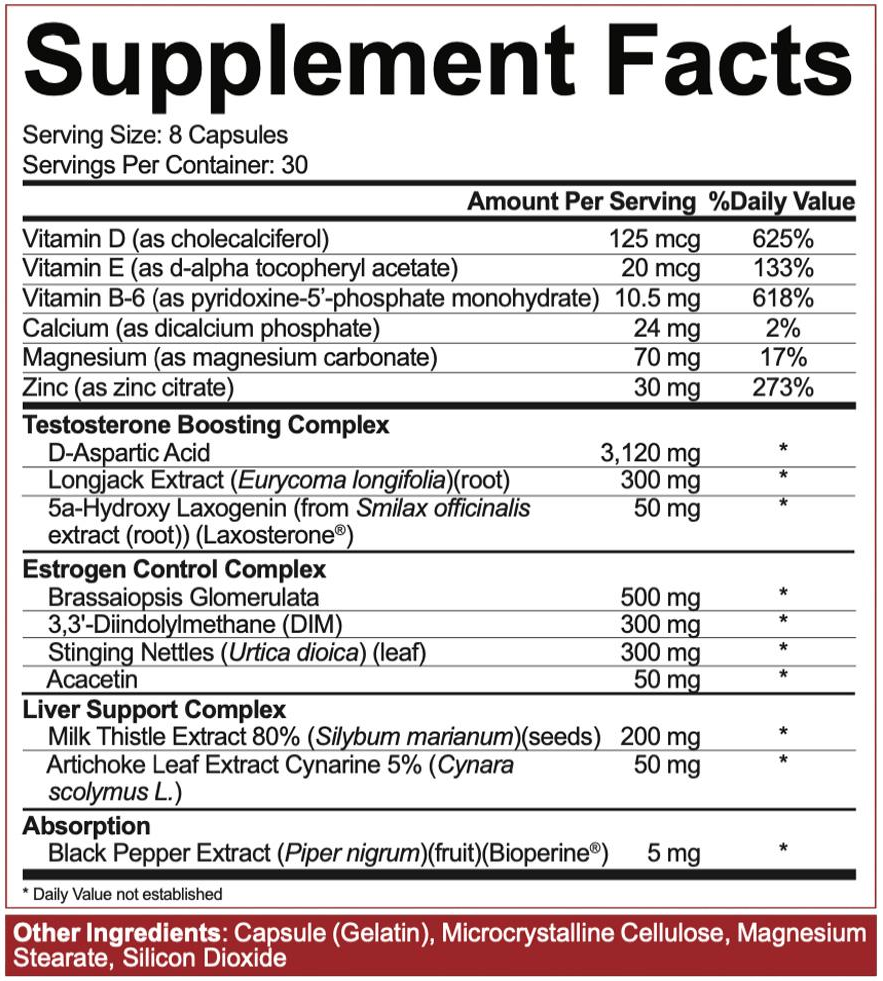
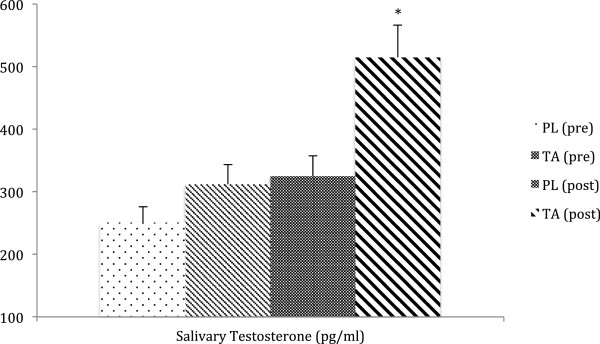
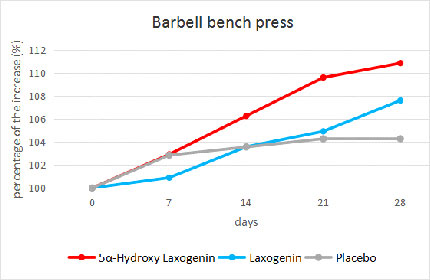
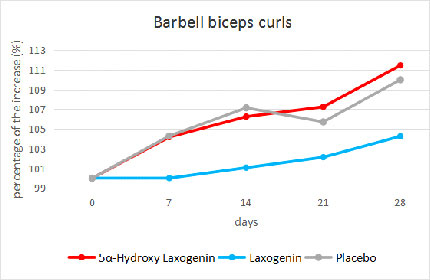
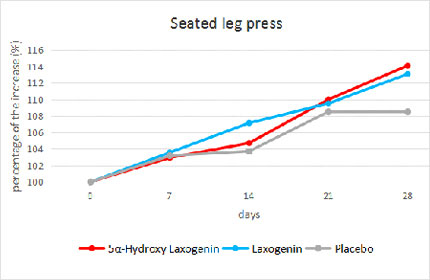
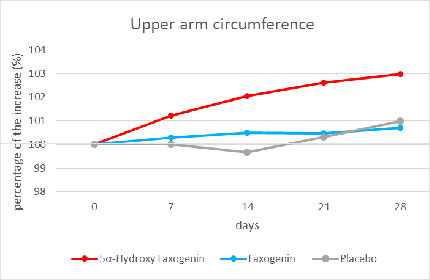
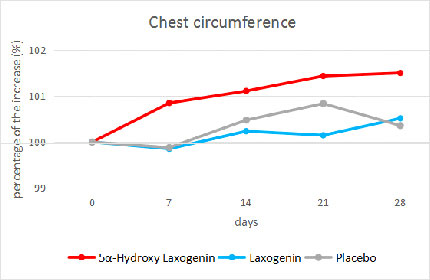
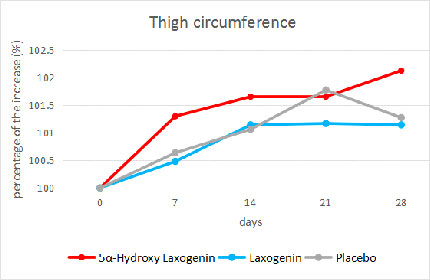
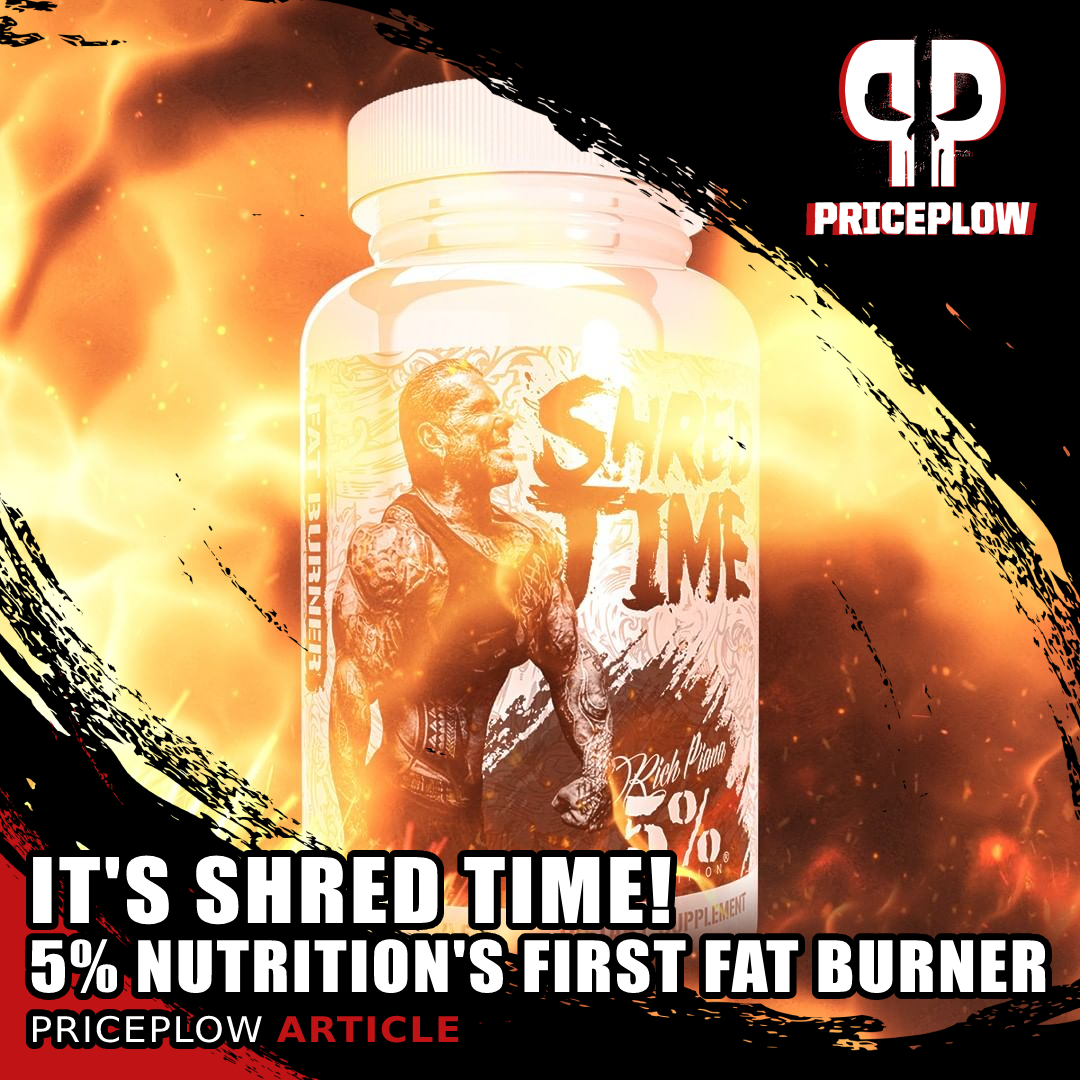
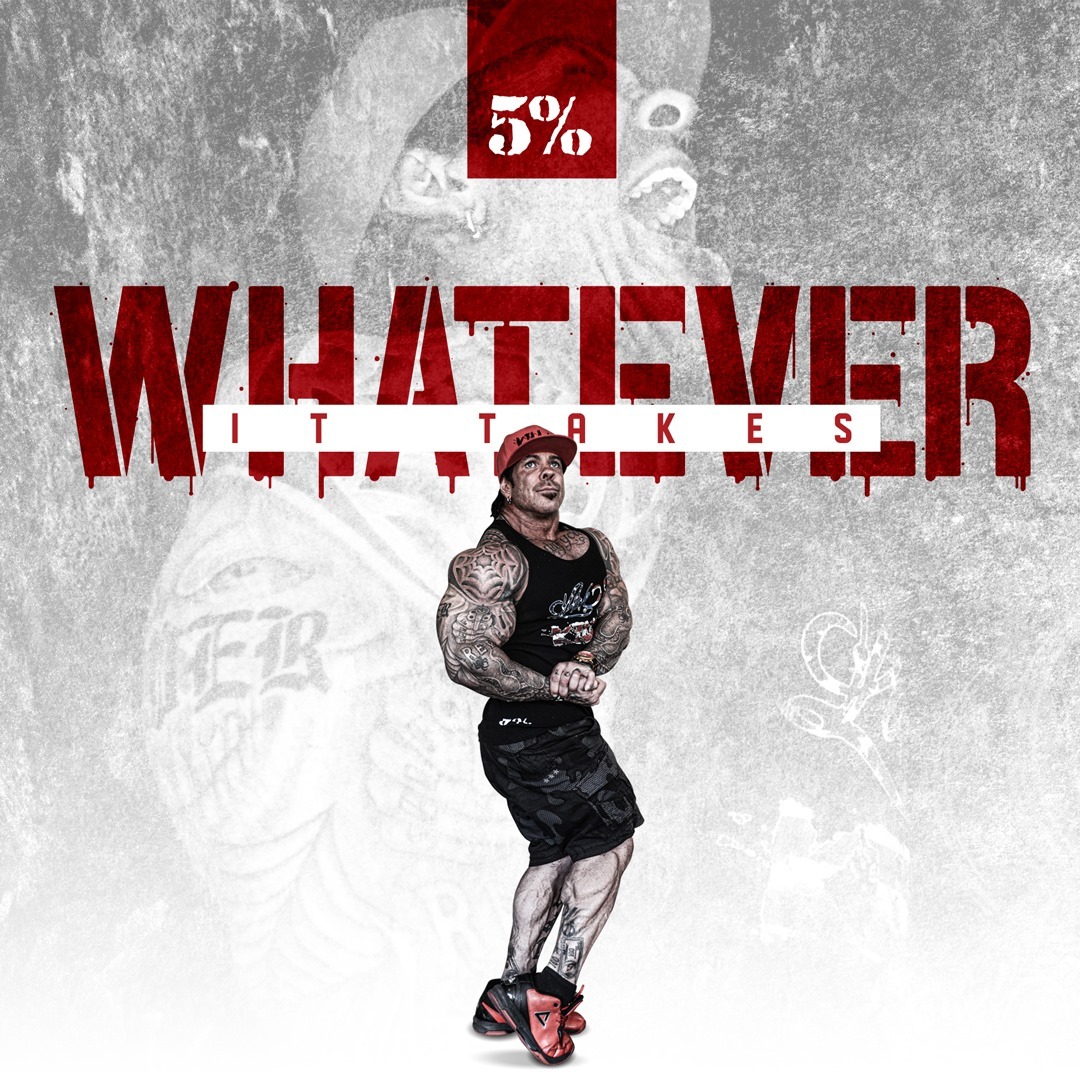
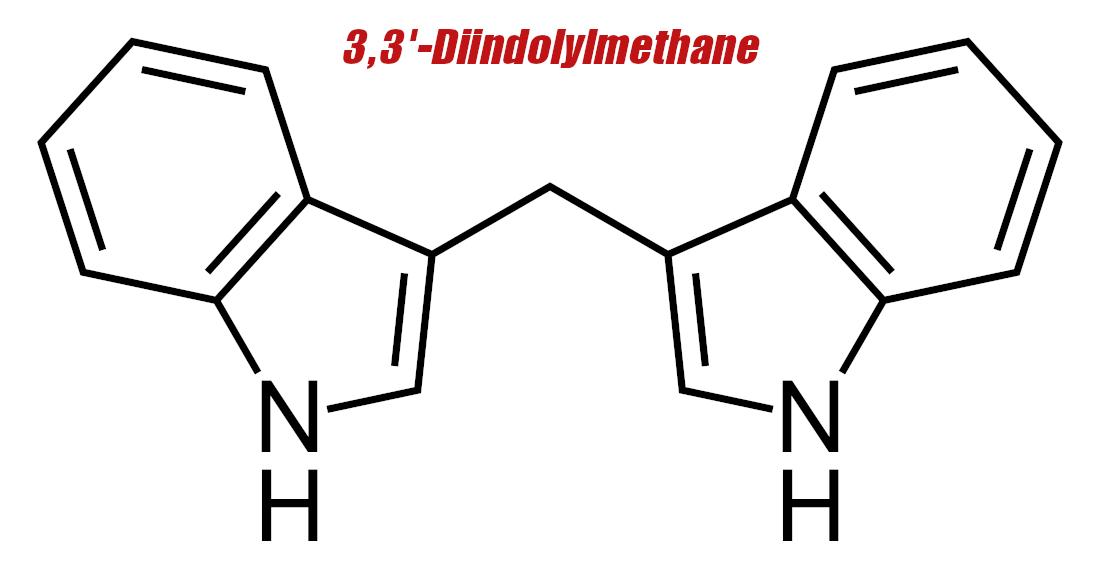
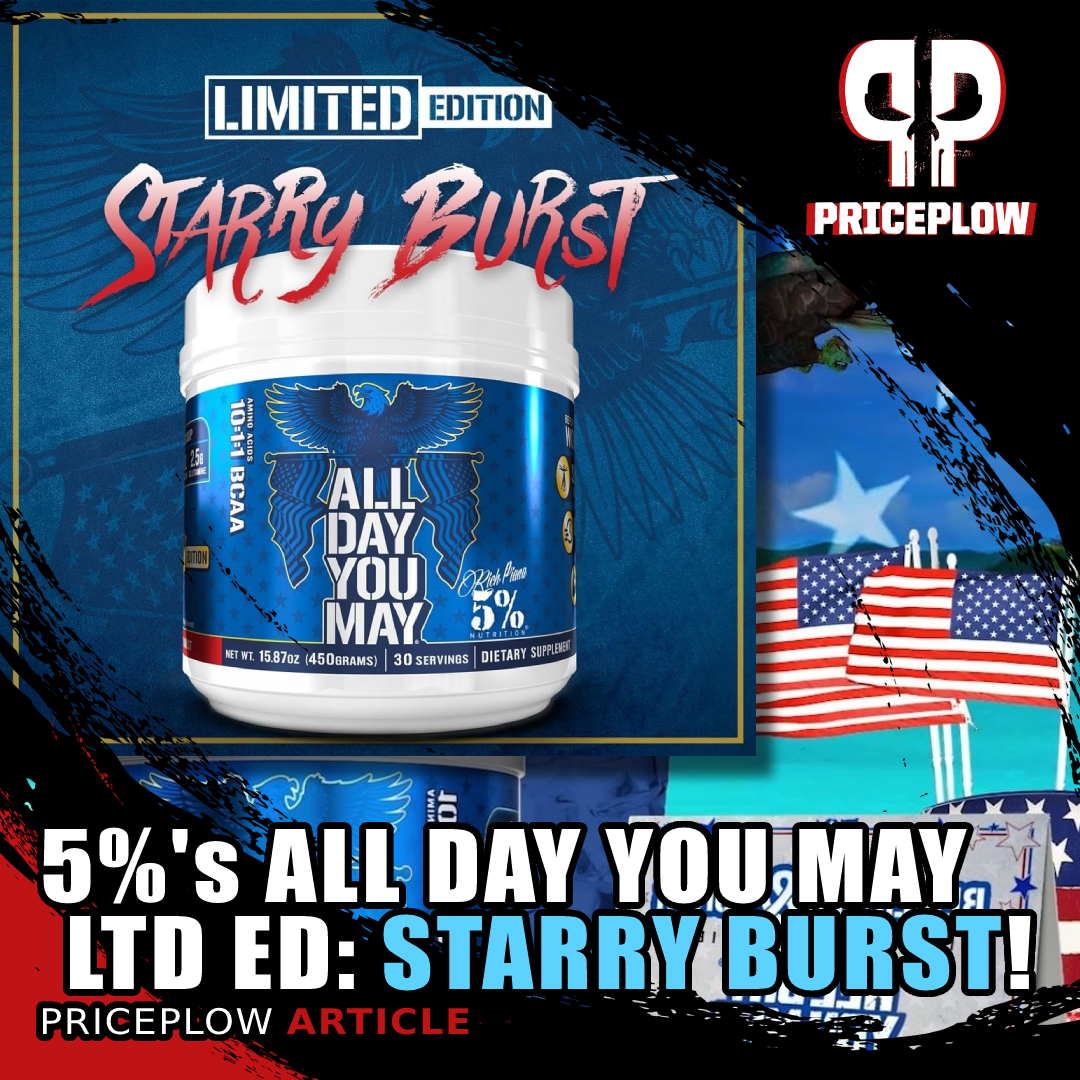
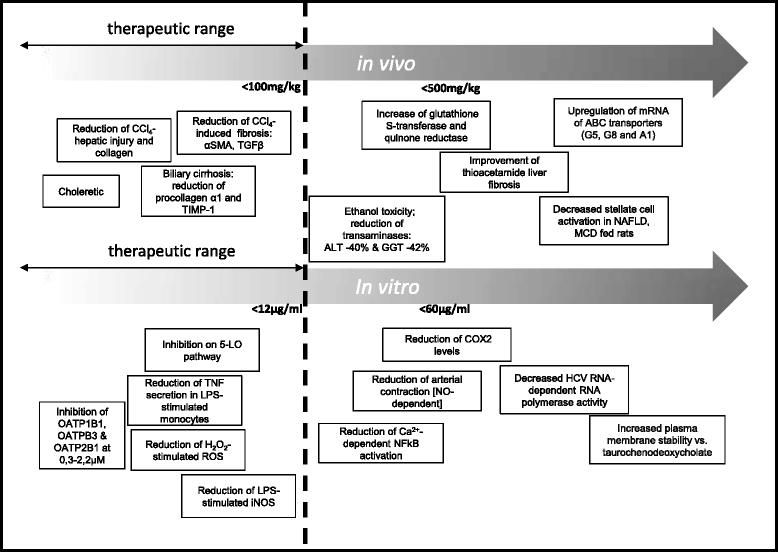
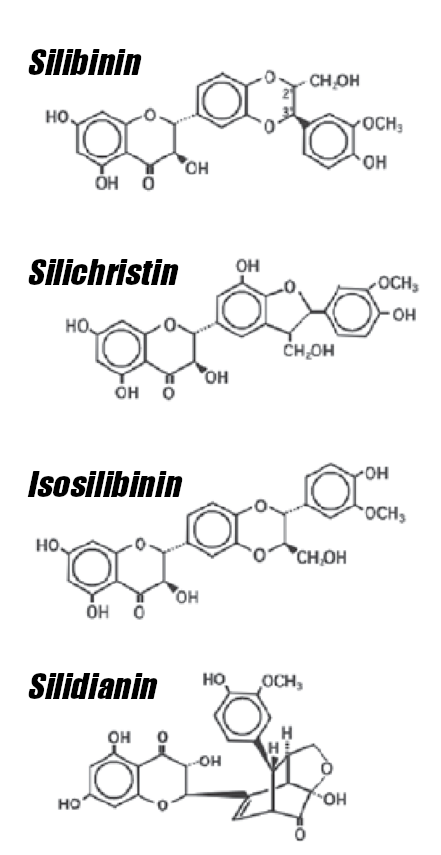
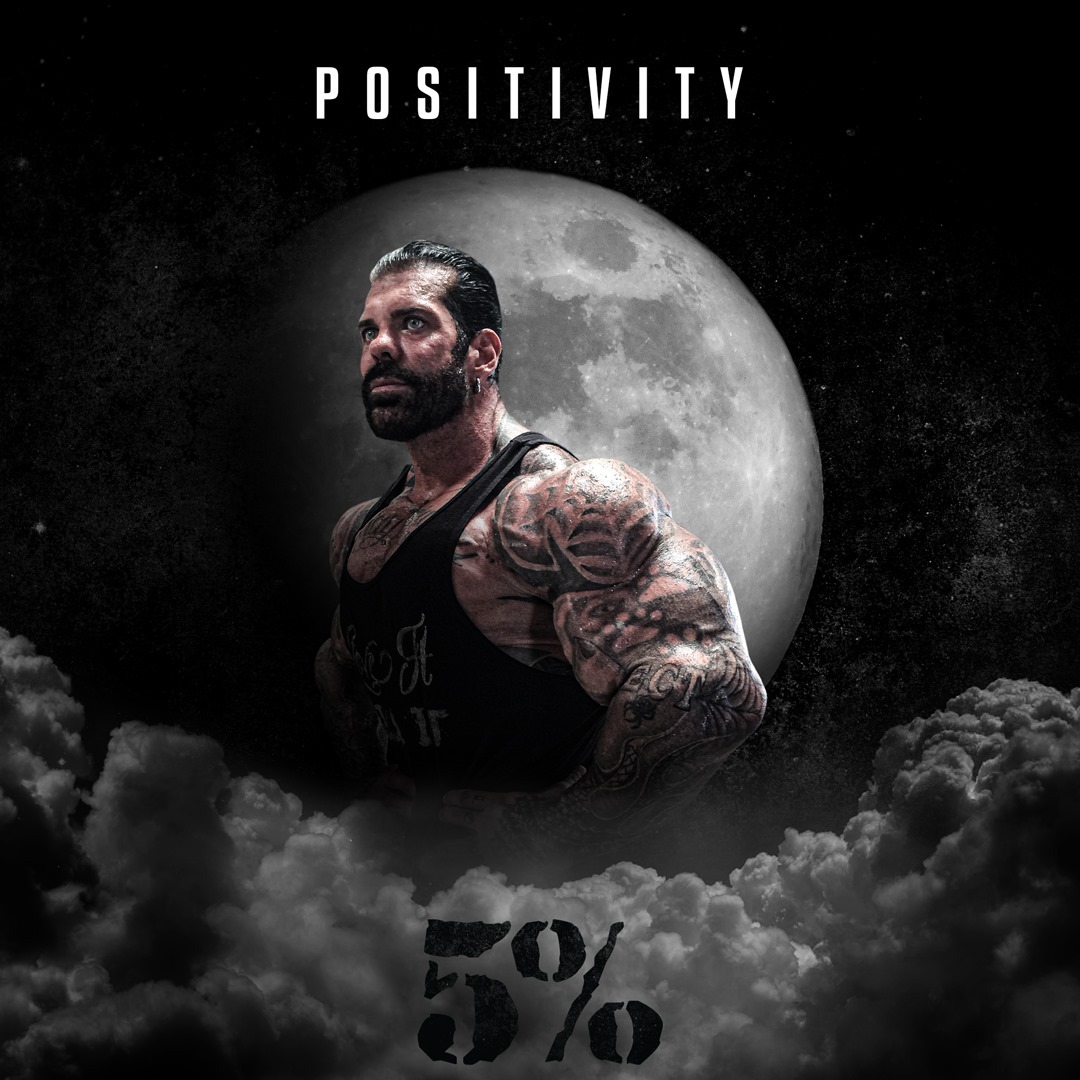
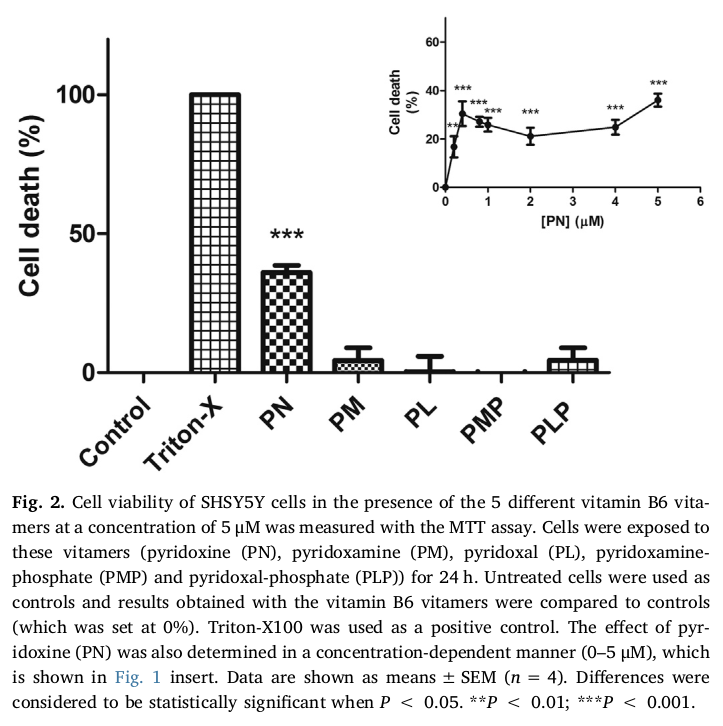
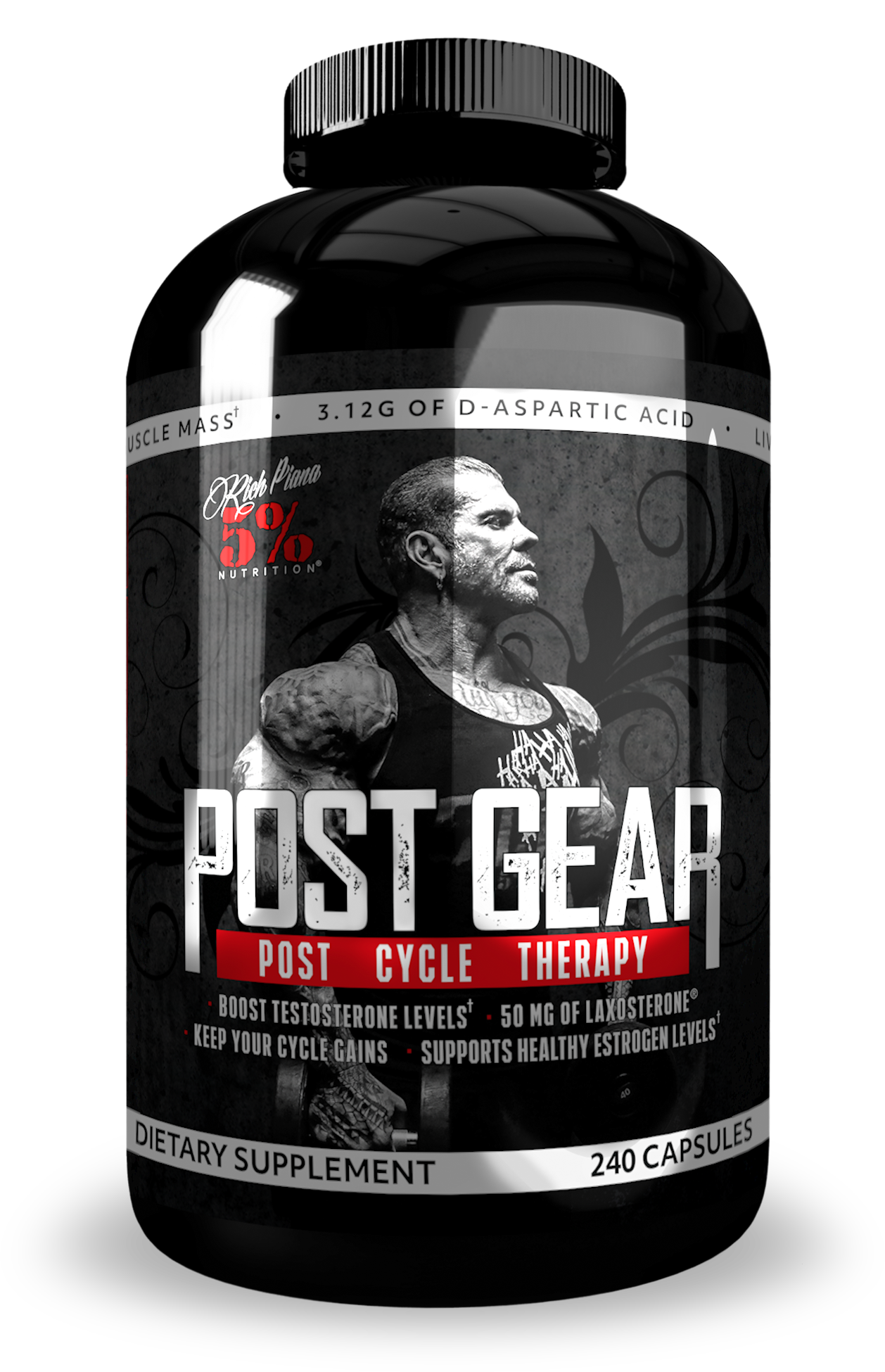


Comments and Discussion (Powered by the PricePlow Forum)